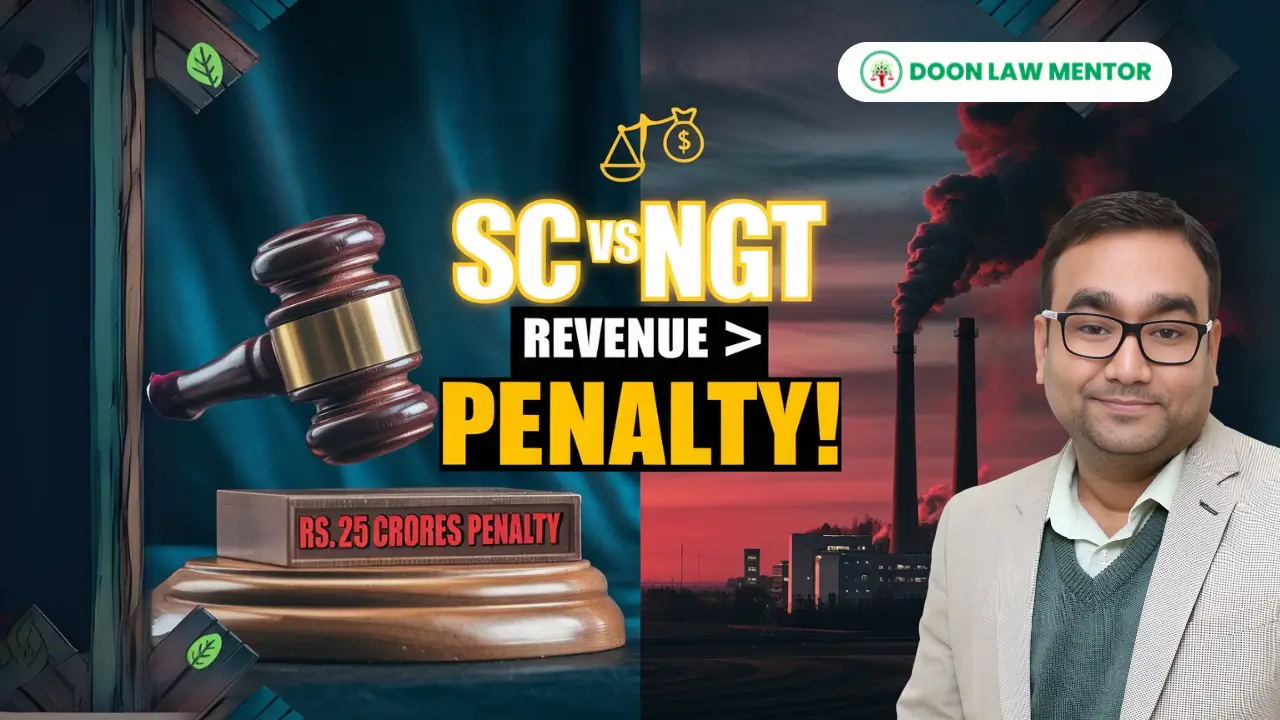Introduction: Importance of Landmark Judgments in Civil Procedure Law
The Code of Civil Procedure, 1908 (CPC) forms the backbone of civil litigation in India. It provides the framework for how civil proceedings are conducted, covering jurisdiction, pleadings, trials, judgments, and appeals. Over the years, the interpretation and application of the CPC have been shaped by several landmark judgments. These rulings have clarified legal ambiguities and established crucial principles that continue to guide the judiciary.
For law students and judiciary exam aspirants, understanding these landmark judgments related to the Code of Civil Procedure, 1908 is crucial for mastering civil procedure and its practical application in courts. This blog will explore the top 10 landmark judgments that have significantly impacted Indian civil procedural law.
Table of Contents
1. K. K. Velusamy v. N. Palaanisamy (2011)
Citation: (2011) 11 SCC 275
Issue:
The central issue in this case was whether courts have the power to permit parties to adduce additional evidence after the trial has concluded.
Judgment:
The Supreme Court held that Order XVIII Rule 17 of the CPC, which allows the court to recall witnesses, can be invoked sparingly and only to remove ambiguities or clarify evidence. The Court clarified that this provision is not meant to fill gaps in evidence or to allow parties to re-open the case.
Significance:
This ruling emphasized the limited scope of recalling witnesses after the closure of evidence. It reinforced that courts must exercise this power cautiously and ensure it does not prejudice the other party.
Why It Matters:
For law students and judiciary exam aspirants, this judgment underlines the importance of adhering to procedural norms, particularly regarding evidence. It is a critical precedent that can be cited in situations where parties attempt to reintroduce evidence at later stages of the trial.
2. M. L. Sethi v. R. P. Kapur (1972)
Citation: AIR 1972 SC 2379
Issue:
The case dealt with the question of jurisdiction and the scope of Order VI Rule 17 of the CPC regarding amendments to pleadings.
Judgment:
The Supreme Court held that courts should not allow amendments to pleadings if the amendment changes the nature of the suit or introduces a new cause of action. However, amendments that clarify or add to existing claims should be allowed in the interest of justice.
Significance:
This judgment emphasized the balance between justice and procedure, ensuring that amendments should not lead to undue delays or injustice to the other party.
Why It Matters:
Understanding the rules regarding amendments to pleadings is vital for aspiring judges and lawyers. This judgment clarifies how and when amendments can be allowed, ensuring that cases proceed fairly without unnecessary delays.
3. Dhulabhai v. State of Madhya Pradesh (1968)
Citation: AIR 1969 SC 78
Issue:
The main issue in this case was whether civil courts have the jurisdiction to decide cases when special statutes provide for an alternative remedy.
Judgment:
The Supreme Court laid down principles to determine when civil courts can exercise jurisdiction in cases where statutory remedies are available. The Court held that civil courts have jurisdiction unless the special statute explicitly or implicitly excludes it.
Significance:
This landmark judgment defines the boundaries of civil court jurisdiction, especially when alternative remedies exist under special laws. It sets out criteria to decide whether a civil suit can be barred.
Why It Matters:
Law students must be aware of the circumstances in which civil courts can assume jurisdiction despite the existence of statutory remedies. This case remains an important precedent for cases involving jurisdictional challenges.
4. S. P. Gupta v. President of India (1982)
Citation: AIR 1982 SC 149
Issue:
This case is primarily known for its significance in constitutional law, but it also dealt with the principles of Order VII Rule 11 of the CPC, specifically the rejection of plaints.
Judgment:
The Court ruled that the plaint can be rejected if it fails to disclose a cause of action or if the suit appears to be barred by any law, ensuring that frivolous suits are weeded out at the initial stages.
Significance:
The ruling underlines the importance of cause of action in civil suits and empowers courts to reject plaints that lack merit. This ensures that the judicial system is not burdened with unnecessary litigation.
Why It Matters:
Understanding the grounds for rejecting plaints under Order VII Rule 11 is crucial for judiciary exam aspirants. It plays a vital role in ensuring that courts do not entertain baseless suits, saving time and resources.
5. State of Maharashtra v. National Construction Co. (1996)
Citation: (1996) 1 SCC 735
Issue:
The issue here was whether an arbitration clause can oust the jurisdiction of civil courts.
Judgment:
The Supreme Court held that an arbitration agreement does not automatically oust the jurisdiction of civil courts unless there is a clear intent to refer the dispute to arbitration. The court has the discretion to examine the validity and applicability of the arbitration clause.
Significance:
This judgment clarified the interplay between civil procedure and arbitration law, ensuring that arbitration agreements are enforced fairly without depriving parties of their right to access civil courts.
Why It Matters:
For law students, this case provides insight into how courts balance civil litigation and alternative dispute resolution mechanisms like arbitration.
6. Salem Advocate Bar Association v. Union of India (2005)
Citation: (2005) 6 SCC 344
Issue:
This case involved the constitutionality of amendments to the CPC, particularly regarding procedural reforms aimed at expediting the civil justice system.
Judgment:
The Supreme Court upheld the amendments to the CPC and emphasized that procedural reforms are necessary to ensure the speedy delivery of justice. It also provided clarifications on pre-trial procedures, case management, and alternative dispute resolution mechanisms.
Significance:
The ruling highlighted the importance of judicial efficiency and endorsed reforms that encourage swift resolution of civil disputes.
Why It Matters:
For judiciary aspirants, this case emphasizes the need for reforms in procedural law and demonstrates the Court’s support for a more efficient civil justice system.
7. R. Rajagopal Reddy v. Padmini Chandrasekharan (1995)
Citation: AIR 1996 SC 238
Issue:
The central issue was whether a decree can be challenged on the grounds of fraud and collusion.
Judgment:
The Supreme Court ruled that a decree obtained by fraud or collusion can be challenged at any time, as fraud vitiates even the most solemn proceedings. However, it placed the burden of proof on the party alleging fraud.
Significance:
This judgment reinforces the principle that fraud cannot be allowed to triumph in judicial proceedings and provides a mechanism to challenge fraudulent decrees.
Why It Matters:
Aspiring judges and lawyers must understand the gravity of fraud in civil litigation and the principles governing the challenging of decrees obtained by fraudulent means.
8. Ramrameshwari Devi v. Nirmala Devi (2011)
Citation: (2011) 8 SCC 249
Issue:
The issue was whether costs should be imposed on parties engaging in frivolous litigation or attempting to delay proceedings.
Judgment:
The Supreme Court ruled that courts should impose exemplary costs on parties that misuse the judicial process by filing frivolous suits or engaging in tactics that cause undue delay. This judgment seeks to curb the increasing instances of vexatious litigation.
Significance:
This judgment promotes the principle of responsible litigation and deters parties from abusing the judicial process, thereby ensuring the timely resolution of disputes.
Why It Matters:
For judiciary aspirants, this case highlights the need for discouraging frivolous litigation and encouraging judicial responsibility.
9. M. S. Grewal v. Deep Chand Sood (2001)
Citation: (2001) 8 SCC 151
Issue:
The issue was whether compensation can be claimed under the CPC for the death of children in a tragic accident due to the negligence of school authorities.
Judgment:
The Supreme Court upheld the claim for compensation and reiterated that civil courts can grant damages for negligence, even if the incident does not fall within the scope of tort law. It extended the principle of vicarious liability to educational institutions.
Significance:
This case extended the application of the CPC to cases involving negligence and emphasized the courts’ power to award compensation in civil suits.
Why It Matters:
Understanding the liability for negligence under civil law is crucial for judiciary aspirants, as it impacts a wide range of civil litigation cases.
10. Shiv Shakti Cooperative Housing Society v. Swaraj Developers (2003)
Citation: (2003) 6 SCC 659
Issue:
The case dealt with the scope of Order XLVII Rule 1 of the CPC, specifically whether review petitions can be allowed after the disposal of a case.
Judgment:
The Supreme Court held that review petitions can only be entertained under limited circumstances, such as an apparent error on the face of the record. It emphasized that reviews are not meant to re-open a case, but to correct glaring errors.
Significance:
This ruling clarified the limited scope of review petitions under the CPC, ensuring that courts do not misuse this power.
Why It Matters:
For judiciary aspirants, understanding the review mechanism is essential for interpreting the finality of judgments and when review petitions can be justified.
Conclusion: Understanding Landmark Judgments Under the CPC
The Code of Civil Procedure, 1908 is a complex legal framework, but these landmark judgments have shaped its application and interpretation over the years. From jurisdictional issues to procedural reforms, these cases highlight critical aspects of civil litigation that law students, lawyers, and judiciary aspirants must understand. By studying these judgments, you can gain a deeper understanding of how the CPC functions in real-world scenarios and how the judiciary continues to evolve civil procedure law.
FAQs
1. What are the most important landmark judgments related to the Code of Civil Procedure, 1908?
Some of the most important judgments include K.K. Velusamy v. N. Palaanisamy, M.L. Sethi v. R.P. Kapur, and Dhulabhai v. State of Madhya Pradesh, which deal with key issues like evidence, amendments, and jurisdiction.
2. Why is the Dhulabhai case significant in civil procedure law?
The Dhulabhai case is significant because it clarified the jurisdiction of civil courts in cases where statutory remedies are available, establishing critical guidelines for resolving jurisdictional conflicts.
3. What role does the Salem Advocate Bar Association case play in CPC reforms?
The Salem Advocate Bar Association case supported procedural reforms in the CPC, emphasizing the need for speedier resolutions of civil disputes through pre-trial procedures and alternative dispute resolution mechanisms.
4. How does the M.S. Grewal case extend liability under civil law?
In the M.S. Grewal case, the court extended the principle of vicarious liability to educational institutions, allowing compensation for negligence claims.
5. Can a decree obtained by fraud be challenged?
Yes, as established in R. Rajagopal Reddy v. Padmini Chandrasekharan, a decree obtained by fraud can be challenged at any time, as fraud vitiates judicial proceedings.
#LandmarkJudgments #CodeOfCivilProcedure #CPC #CivilLawIndia #JudiciaryExams #CPCJudgments






1 Comment
Your comment is awaiting moderation.
I am extremely inspired along with your writing abilities and also with the layout to your weblog.
Is this a paid subject matter or did you modify it your self?
Anyway keep up the excellent quality writing, it’s uncommon to see a nice weblog like this one nowadays.
Beehiiv!
This article brilliantly highlights the importance of legal consultants in navigating complex legal issues.